- Client’s Overview
- Client’s Challenges = Our Tasks
- The Core Part of Our Companies’ Synergy
- What Client Said
- The Results: Miche.IT Have Doubled Store Performance Simply With Magento 2 Migration
Factorylux is a lighting manufacturer in the United Kingdom and the owner of two online stores that provide customers with worldwide shipping, support and certification. They function as a constructor of various lighting product attribute options, resulting in the generation of a PDF file with descriptions, images, and the specification code of the selected product.
In a nutshell, Factorylux is a home for simple and modern lighting brands that are developing more ways to harness the technical performance and circular economy.
Client’s Overview
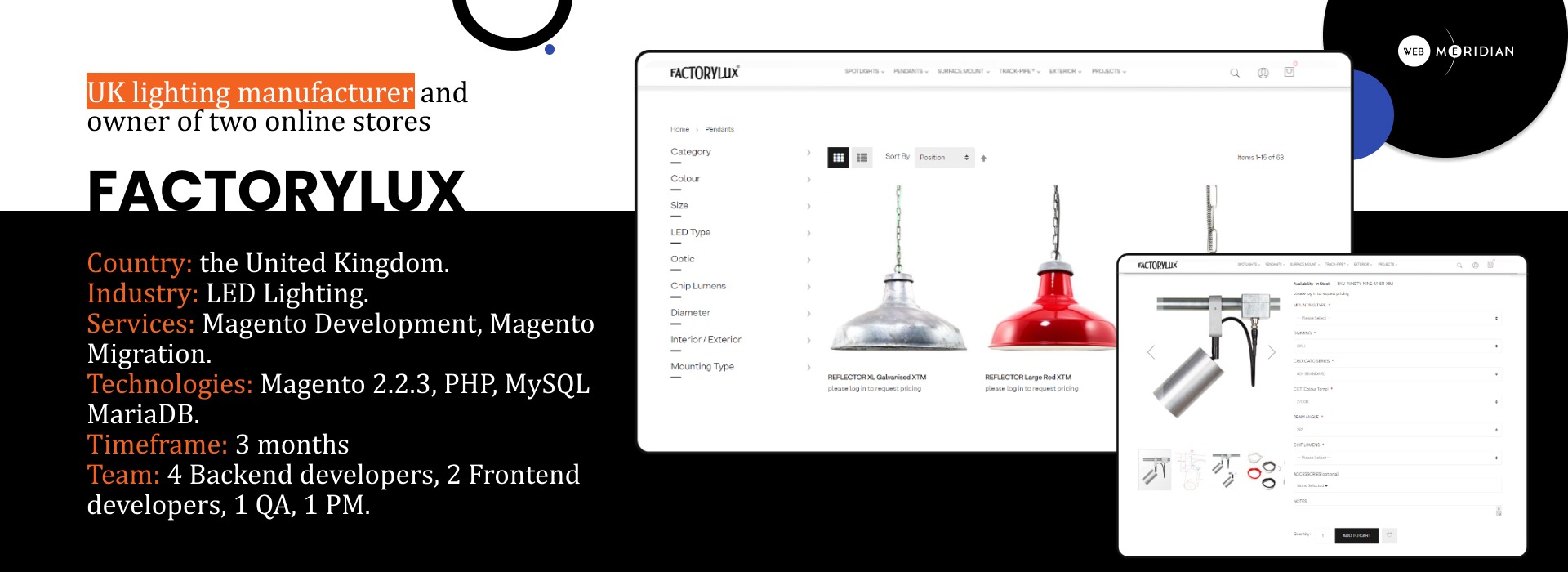
Client’s Challenges = Our Tasks
This site is a replacement and improved version of the WordPress site. Another website was running Magento 1.9. It was also planned to replace the second site with Magento 2 so that two separate domains could be linked to a single backend and warehouse management system.
Multiple brands can be built under the same unified umbrella. Each e-shop will generate a distinct and substantial revenue stream.
Although it may appear to be a difficult task, the multi-shop approach has the potential to increase your sales and revenue. Consult a development team to see if this is the best option for you and properly put it up.
Challenge #1. Magento 2 Migration
- Magento 2 Migration process takes about 50 to 790 hours or an average of about 4 months.
- The importation of your previous data takes about 20 to 80 hours.
- Migrating compatible third-party extensions only takes a few days, about 10 to 60 hours.
- Non-compatible extensions usually take longer, but still work in the same range.
- Setting up the theme takes a very long time, ranging from 20 to 450 hours.
- The customisation of codes usually takes about 20 to 200 hours.
- It depends on the code used in the previous version of the Magento.
- However, the installation of Magento 2 can take up to 2 days to complete.
- Testing the new version should take at least a week to complete, depending on the taste of the user, but the average time for the project is about 150-250 hours.
What You Can Learn From This Story | Smooth Migration From Shopify & WooCommerce to Magento 2
There were some custom features that we needed to add, such as:
- a “quotation“ payment method (enabling the customer to request the quote for the configured product);
- different user groups, so that the buyer could see the specific price for the ordered quantity in the cart;
- a possibility to download technical files from the product page;
- a possibility to create the project pages from the admin field.
We also needed to present the user with choices of different attributes of the selected product, resulting in the generation of a PDF-file with a description, images, and the specification code of this product.
You may have seen, during competition analysis, that in the world of eCommerce, top businesses are employing all cutting-edge Magento 2 features to attract and interest customers, who will enjoy their shopping journey and acquire the precise product they desire.
Challenge #2. Customisations
#1. Smooth Shopping Cart
Shopping cart is the endgame, and you need to make it easier for people to get there.
- Add Live Chat for Real-Time Conversations
- Use a Few Payment Methods
- Make the Shopping Cart User-Friendly:
-
- Include product details in a basket summary.
- Show total cost.
- Let users save items for later.
- Give your shopping cart long-term memory. You lose if your cart refreshes every time a visitor returns.
- Include features like ‘return to shopping’ while viewing the cart items.
- Make it easy to edit the number of items, size, and other pertinent details.
#2. Intuitive One-Step Checkout
When a request form is too long, users will usually abandon it halfway through.
Use the one-click payment option to shorten the procedure. Make it simple for customers to understand where they are in the checkout process.
#3. Product Configurator
With integrations like 3D viewing and real-time display, customers can choose each feature and see it reflected on the screens until complete by adjusting the offered options. The adjustable product in Magento 2 in a decor store could include items like the item’s material, length, artwork, collar type, and more.
#4. High-Converting Product Page
- Step 1: Develop a Clear Value Proposition
When it comes to value, your primary goal should be to convince customers to feel proud of themselves for purchasing from you. To communicate with all audiences, our marketing team recommends creating solid and compelling content and combining components of the UX and written text.
- Step 2: Create an Intuitive Navigation Website
When we talk about navigation, we’re talking about how simple it is. Yes, this may appear to be a contradiction because you want to cater to everyone, yet simplicity may not provide diversity.
- Step 3: Make Your Brand Easily Recognizable
Maintain consistency in your brand’s colours, fonts, messaging, and other identifying details. Share your story. Your customers must be able to connect with the brand on a personal level and feel emotions toward it. If you can get your target audience to feel warm and fuzzy whenever your brand comes up, you will have done your job.
- Step 4: Create an Easy-to-Use Shopping Cart
It needs to be easy to spot. It should also be placed in the upper right corner. Furthermore, it is preferable if the cart can display the number of things placed in it on a little symbol. The shopping cart should also be able to slide out, allowing the customer to continue shopping or proceed to the checkout if desired.
- Step #5: Advanced and Simple Search Bar
Finding anything on your website should be simple, especially if you have a large catalogue. If you have a wide range of products, the consumer should be able to find what they are looking for by using a website search bar.
Our Point of View
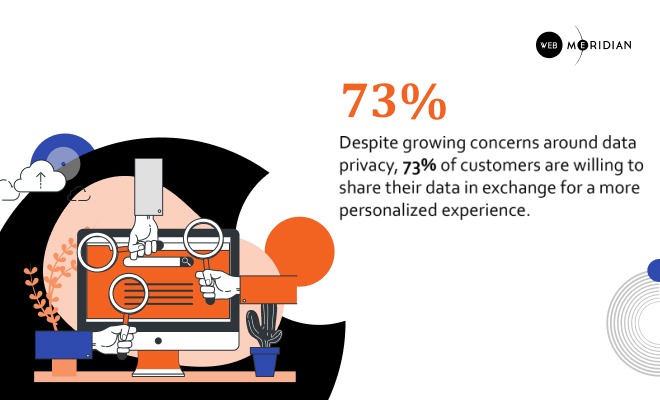
We live in a world that is always short on time. Our lives are rushed on a daily basis, so your site has to meet the speed requirements of a generation of doers. Magento speed optimization is a crucial necessity for any site.
So, our team needed to fix the issue with the low loading speed of product pages with a huge number of optional dependencies.
Challenge #3. Speed
If you follow the checklist, then your site will enjoy the faster performance:
- Focus on a light theme
- Remove excess modules from the site
- Compress modules if needed
- Optimize space on hosting
- Compress your images
- Try lazy load
- Minify JS & CSS Scripts
- Utilize caching from the server
- Use HTTP/2
- Use Google PageSpeed Insights
- Remove quick shop functionality
Everyone needs a little help sometimes. Our team of experts at WebMeridian can work with you to increase your Shopify site’s speed substantially. Contact us today to learn more.
Recipe for the High Website Speed
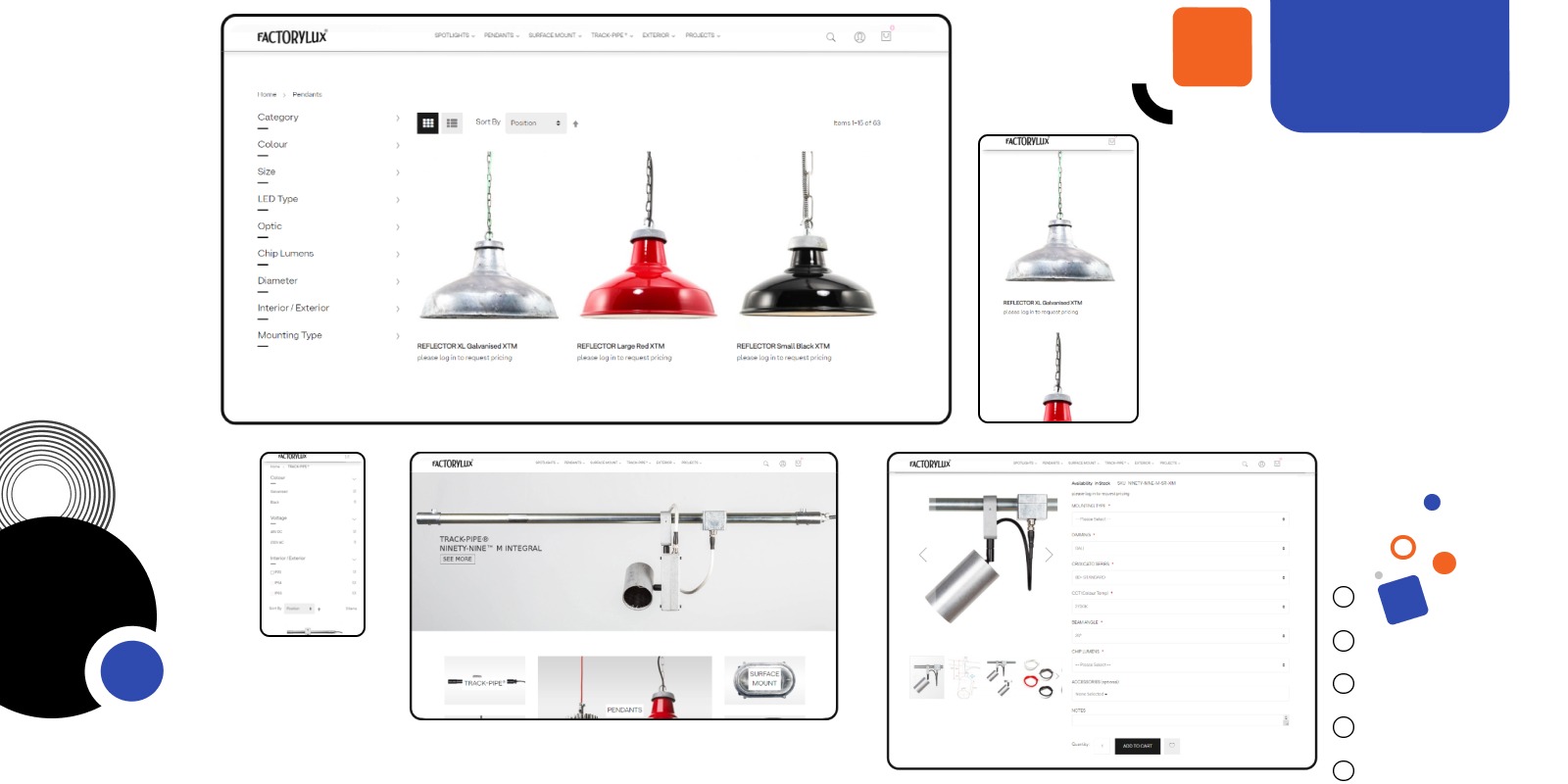
We began by acquiring new visual templates and installing the “Magento multi-store stores with different domains” extension. Using this Magento module, the client can manage two distinct stores and warehouse management systems from a single account. In addition, we upgraded two stores to Magento 2.2.6.
Other works:
- Custom checkout process. The less information will be there to complete; the more people will go through the purchase.
- Custom product configurator with the generation of pdf-file with description, images, and the specification code.
- Product gallery as most shoppers don’t want to read a lot but instead want to focus on pictures and other attractive things.
- High-converting product page with a clear value proposition, intuitive navigation and easy to access the shopping cart.
- Customized menu and filters.
- Quotation payment method. All major businesses are continually looking for new ways to enhance conversion rates, and the link between payment methods and the point of purchase is obvious.
- Possibility to download spec files from the product pages.
The Core Part of Our Companies’ Synergy
What Client Said
We have combined 2 existing sites into 1 Magento 2 site with a single backend management system. Now, Factorylux is a fully-functioned customised online shop based on Magento 2, serving as a constructor of different attribute options of lighting products with different custom features that help customers to shop with ease and pleasure.
Numbers:
The conversion increased by 17% due to UI/UX optimization.
The sales cycle was cut by 23% after simplifying the checkout process.
Mobile revenue increased by 35% after Migration to Magento 2.
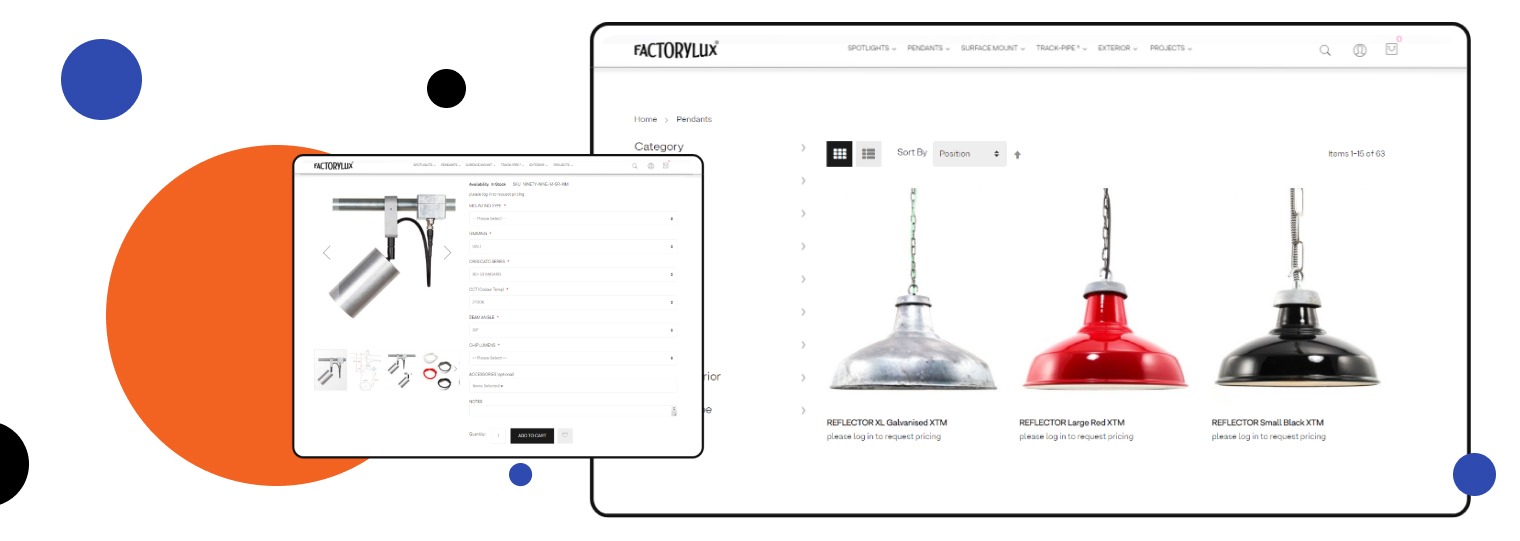
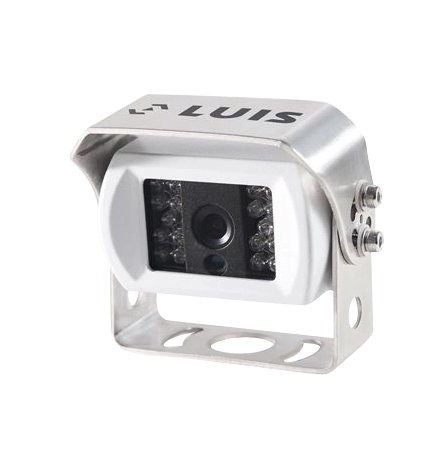
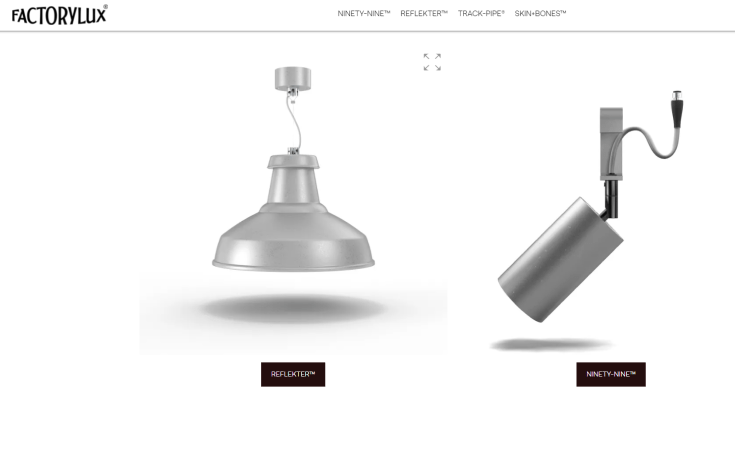
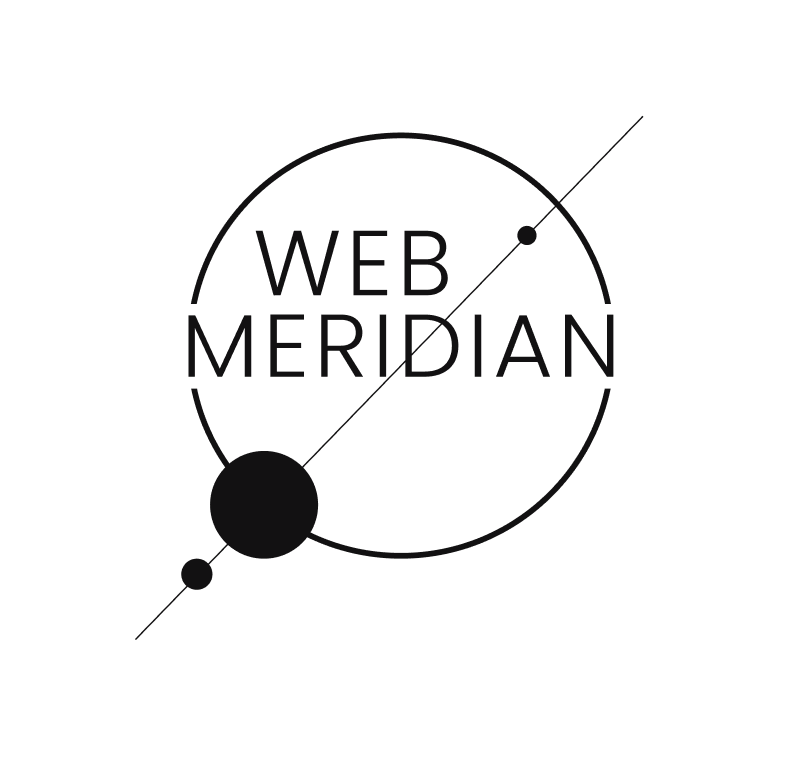
We had the website ‘peer reviewed’ by a 3rd party developer - code / architecture / etc = good! Nice work.